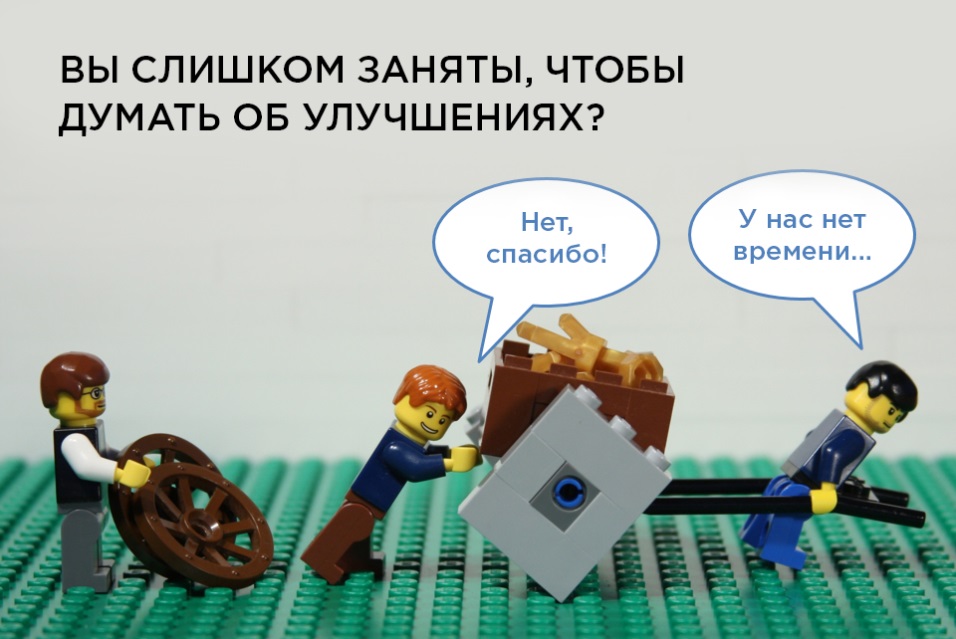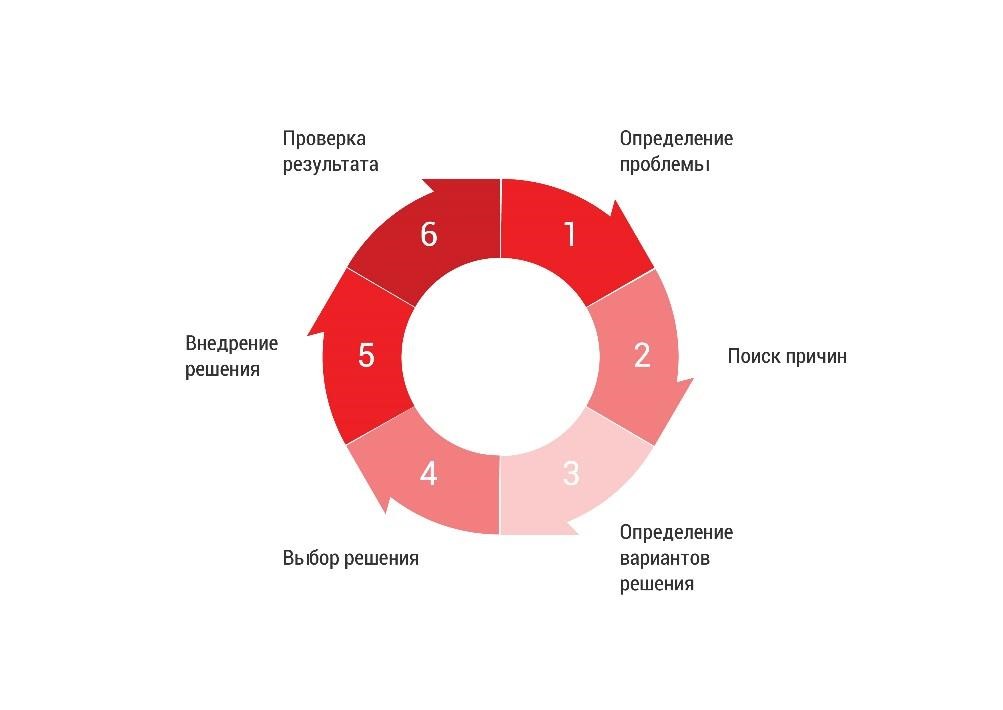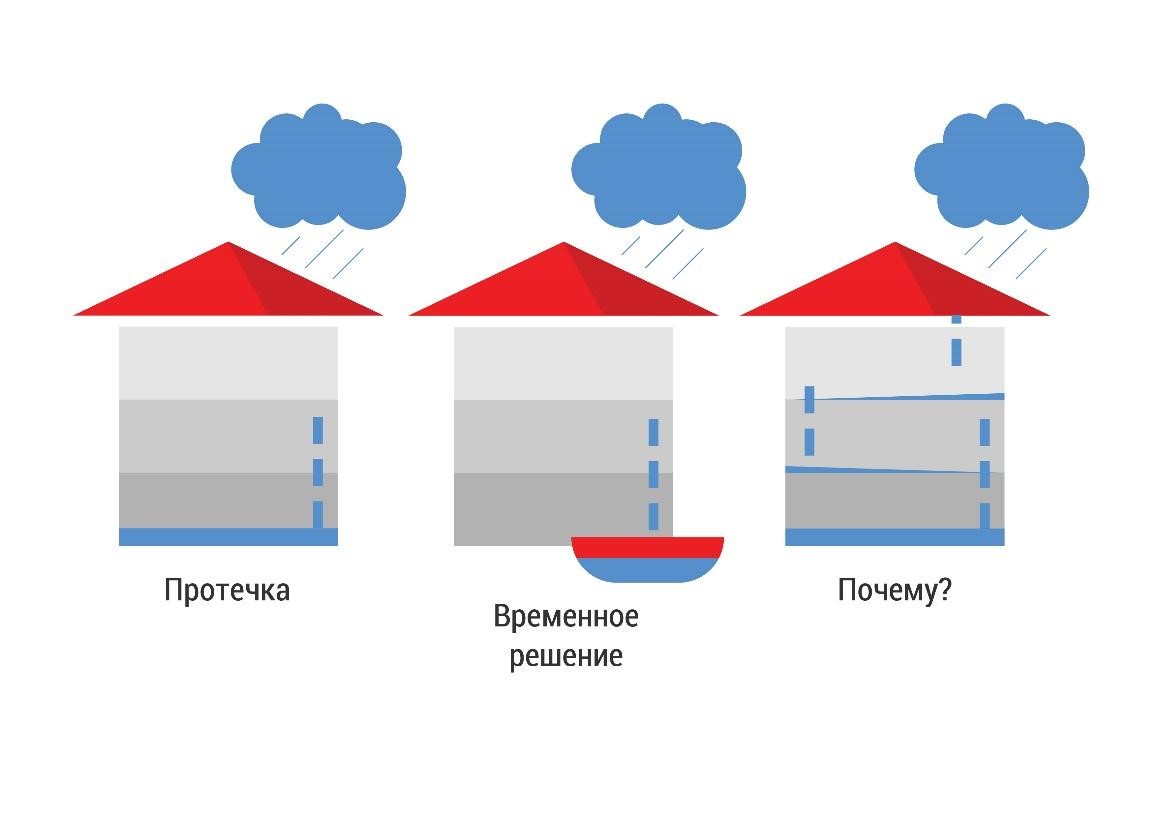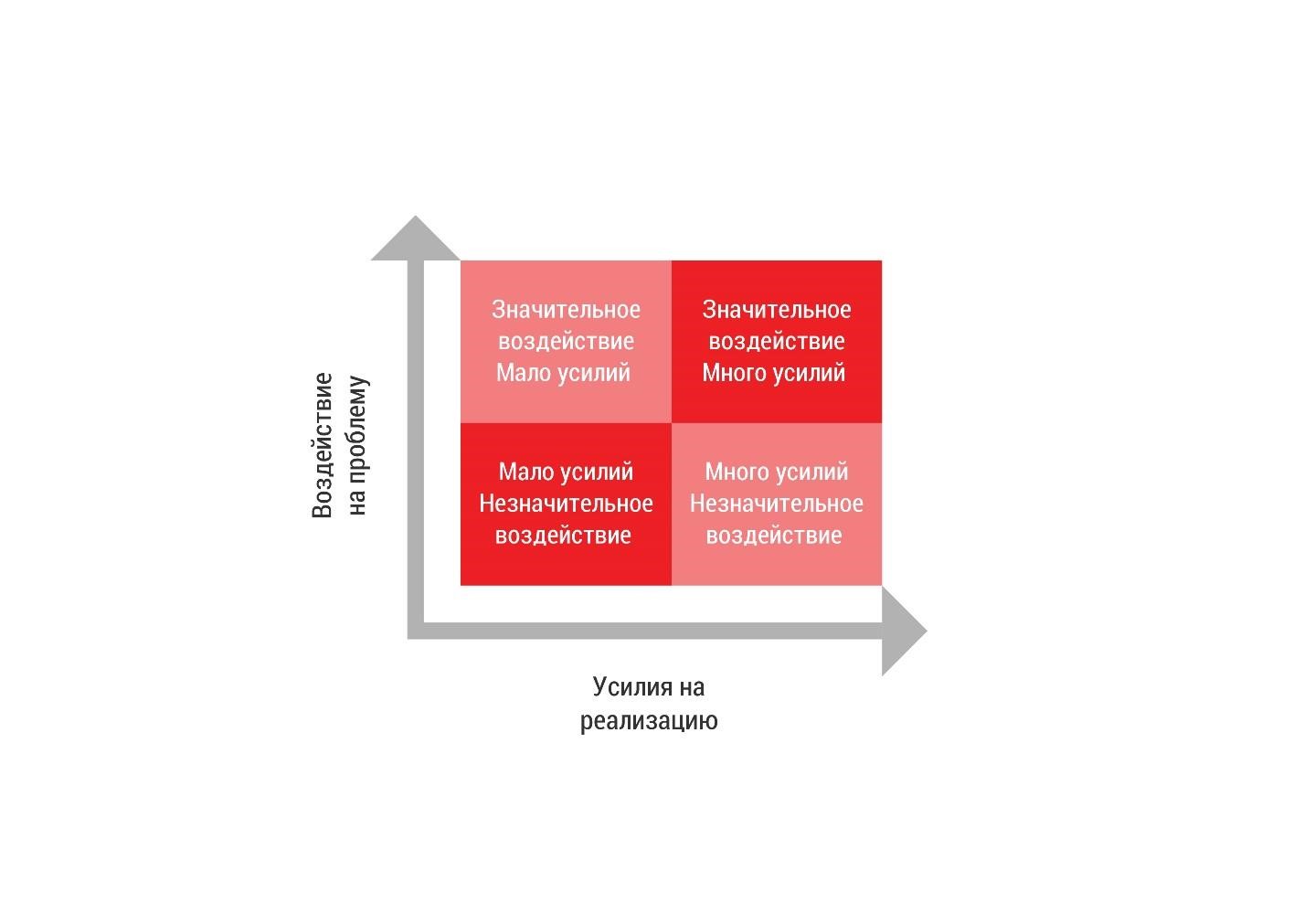Problem Solving Session
The way to fix the problem in 6 steps
Since 2013 we use in our work the concept of lean manufacturing ( lean ). With its help, we improve the quality of service, eliminate losses and try to anticipate the expectations of our customers. We have about 10 tools and techniques in our arsenal. One of the most popular tools that is used in most departments of the company is a problem solving session, or problem solving session.
We use the session method to solve problems of different levels: technical problems in small teams, drawing up a business plan of the department, solving issues of motivation for employees of the entire company. With the right approach, a good result is obtained - problems are solved in earnest and for a long time.

The ability to solve problems depends on how quickly and correctly your company responds to changing reality and new challenges. An ideal situation when problems are effectively resolved at all levels of the organization. According to the forecasts of the World Economic Forum in the professions of the future, skill in solving complex problems is already in demand, and the trend will continue until at least 2022. Want to be in trend? Then welcome to cat.
I work in the department for optimizing the provision of services. My colleagues and I help the teams and the company as a whole to work better - we remove ineffective steps from the processes, introduce best practices, and create an environment of continuous improvement. Problem solving session performs several tasks at once:
- the problem has an optimal solution
- root causes are eliminated, so the problem will not recur
- employees with greater responsibility implement the solution, as they participate in all stages of its search.
First, I will talk about the organizational aspects of such sessions. Then we will analyze the steps that it includes.
How to conduct a session to solve the problem
We single out a specific problem and assemble a group that will solve this problem. Optimum work with a group of 3 to 8 people. We hold sessions for a larger number of participants, but in them a lot of resources are spent on facilitating the group.
The composition of the participants is determined by the problem itself - we invite those who are affected by this problem and who will then implement the action plan. For example, a problem with passing certain trainings: trainings are canceled due to the low entry of participants. We invite colleagues from the training department and trainers preparing training material to solve this problem - in our case, they are from different departments. Do not forget about the representatives of the target audience of the training. As a result, we get a look at the problem from all sides and excellent solutions at the exit.
The session must have a moderator. He sets the format of the meeting, monitors the time and leads the group along the necessary steps. For non-critical problems, a person familiar with the algorithm of such sessions and understanding what result to expect at each step is suitable. Learning this is easy, we teach the basic skills of conducting problem solving sessions in two-hour trainings. The more difficult the problem and conditions, the more important are the facilitator's skills. Here, the presenter needs personal experience in conducting such sessions, knowledge of various facilitation techniques.
At a calm pace, the session takes up to two hours. At the output, we get an action plan that should not only eliminate the problem, but also eliminate its repetition.
Often the group manages to gather only for an hour. In such cases, you have to tightly control the time for each stage, stop side discussions, take something offline. For example, an action plan for the solutions found can be drawn up a bit later.
There was experience when they held a session in two or three sets. There was a risk of not gathering the same composition of participants for the continuation of the session.
Immediately make a reservation, if the problem has an obvious or proven solution - you can do without such sessions. Just take and do what is necessary. On the other hand, in the case of known solutions, such a session can lead to more effective, previously unnoticed solutions.
Six-step algorithm
The problem is solved in six steps. The session covers the first four. The fifth step is performed within the time frames set at the session. They return to the sixth step after completing the planned actions:
- Identify the problem and the desired condition;
- Find the root causes;
- Find possible solutions;
- Prioritize decisions and draw up an action plan;
- Implement an action plan;
- Assess whether the problem is resolved.

Step 1. Identify the problem and the desired state
In my opinion, the most time-consuming step. At the very beginning, opinions about the problem being solved in the group differ: everyone understands it in their own way. For some, this may not be a problem at all. It takes up to 15 minutes to form a common understanding of what we will work on. Several times it was that they chose a new problem for analysis instead of the originally stated one.
Options for problems and desired conditions:
Problem 1: For the first half of 2018, 33% of the planned monthly training sessions were canceled due to the insufficient number of participants.
Desired condition 1: 100% of the training sessions planned for the 4th quarter of 2018 were conducted with a sufficient number of participants.
Problem 2: KPI for one of the processes in the red zone for more than a month.
Desired state 2: since March, the KPI for the process does not fall below the target value.
Step 2. Finding the root causes
At this step, the Five Why method goes well ; at the same time, the participants understand what the root cause is. Versions of “Why the problem arose” are recorded on the board or flipchart. An understandable handwriting will come in handy for the presenter :)
After the first step, the group has already set up for work and names many possible reasons. It is useful to overpower yourself and not dwell on the most obvious versions, try to dig deeper.
Let me give you a training example of determining the root cause:
You have discovered a water leak on the first floor. The solution to this problem is a basin for collecting water. This is a temporary solution, since we have not eliminated the root cause of the leak, and it can happen again. Asking the questions “why”, we get to the source of the problem:
- Why is there a leak on the ground floor? - flows on the second and third floors.
- Why is there a leak on the second and third floors? - it is raining and the roof is leaking.
- Why is the roof leaking? - physical wear of the material and the lack of regular inspection of the technical condition of the roof.
The root cause of the leak on the first floor is the leaking roof and the lack of regular inspection. Our decisions should be aimed at eliminating the root causes.

Step 3. Search for possible solutions
So we got to the solutions. It’s hard to imagine what to do here without a quiet brainstorming session. It involves all participants in the discussion and saves time, which is always not enough. For the assault, I distribute adhesive stickers to all participants. Within five minutes, participants write on them something that can eliminate the root causes. On one sticker - one idea, so then it’s more convenient to work with them.
In his first sessions, he forgot to focus the group on eliminating only those reasons that are in the zone of their influence. As a result, we got actions that someone outside the group should have implemented: a neighboring department, management, etc. If such an action plan is transferred to a neighboring department, it will take a lot of effort to adopt it. Remember step 1 - for someone this may not be a problem, the solution of which is worth the time and resources.
Now I remind you of the search for solutions in my area of responsibility. Thus, the colleagues form the habit of looking at the problem through the prism of “what can I do here”.
Step 4. Prioritization of decisions and action plan
In the previous step, the group is at the peak of its performance: it turns out a large number of stickers with solutions. Together with the group, we prioritize each idea according to its impact on eliminating the causes and the amount of effort to implement. The sticker is read to the group, and it decides which quadrant to take it to. For example, the idea is easy to implement, but there will be little effect - this is the lower left quadrant. It may be that the idea will be of great benefit, but considerable resources will have to be spent - we put the idea in the upper right quadrant.
I noticed that one opinion may dominate here, for example, a manager. Therefore, I try to find out the opinion of all participants. At this stage, an approximate assessment of the decisions is made, but practice has shown that this is quite enough for further work.
We do not have time to draw up an action plan in the hourly session. The group does this already outside the scope of the session. To draw up a plan, first of all, stickers are taken from the upper left quadrant “Significant Impact / Little Effort”.

Steps 5 and 6 are clear from the description, there are no special features here. It is useful to immediately determine how and by whom the implementation of the action plan will be monitored. It’s a good idea to put the plan in a prominent place so that the whole team sees the agreement. If at the sixth step it turns out that the problem still exists, we return to step 1 and re-pass this algorithm, excluding already implemented solutions.
Afterword
Confidence in the application of this method appears after 2-3 independently conducted sessions. At first, he took with him a printed template with steps - it allowed not to forget anything. Each step is easily complemented by various useful techniques - the SMART approach to formulate the problem in the first step, the Ishikawa diagram in the second step, and so on.
Problem solving session defines the structure of the process of finding a solution to a problem. Without it, there is a risk of missing something and finding a less effective solution. For example, if instead of searching for root causes, you go straight to solutions, the problem may arise again. This is how to eliminate only the symptoms of the disease.
On the contrary, if you work out each step in a quality manner, you can come up with new, innovative and effective solutions. Involve employees in improving work processes, teach them how to best solve complex situations and take responsibility for the implementation of the solutions found.
I hope that I talked about this method in sufficient detail, maybe it can help you in solving your problems.
